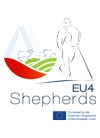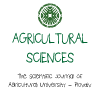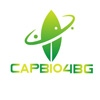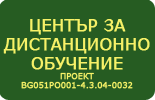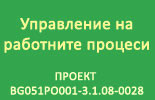Global navigation satellite system
|
Course title: |
Global navigation satellite system |
|
|
Course code: |
IFNSS |
|
|
ECTS: |
5 |
|
|
In-class hours |
Lectures: |
30 |
|
Laboratory work/Tutorials: |
30 |
|
|
Self-preparation hours |
Practical training: |
15 |
|
Other: |
50 |
|
|
Total hours: |
125 |
|
|
Language: |
English |
|
|
Study cycle: |
BSc, Master, PhD |
|
|
Semester: |
Winter, summer |
|
|
Faculty: |
Faculty of Economics |
|
|
Name of the lecturer(s): |
Chief Assist. Prof. Krum Hristov, PhD |
|
|
Mode of delivery: |
Face-to-face, distance learning or a combination of both |
|
|
Prerequisites: |
Basics of informatics and information technologies are required. Technical knowledge and skills are recommended. |
|
|
Learning outcomes of the course unit: |
The course provides an introduction to Global Navigation Satellite Systems technology. The main features and capabilities of navigation systems such as Global Positioning System (GPS), Global Navigation Satellite System (GLONASS), BeiDou Navigation Satellite System (BDS), GALIEO Satellite Navigation System are presented. Various possibilities for the use of Global Navigation Satellite Systems in agriculture are considered: precision farming, GIS, Soil sampling, Field mapping, Remote sensing, Yield monitoring, VRT, etc. The course presents the principles underlying the use of GNSS at meter and sub-meter accuracy for applications in surveying, GIS, agriculture, asset management, and scientific studies. The student will learn the basics of navigation using Global Navigation Satellite Systems (GNSS), such as GPS signals, and other navigation technologies. The student will also get a practical training on the GNSS receiver functionalities via a course work assignment. |
|
|
Course contents: |
1. GNSS Overview. History and introduction on the major GNSS systems. Physical principles that operate in GNSS. Types of satellite navigation systems. Review of global and regional satellite systems (GPS, GLONASS, GALILEO, BEIDOU, IRNSS, QZSS). Satellite-based Augmentation Systems (SBAS). GNSS architecture. 2. Coordinate and time systems. Introduction to coordinate system. Geocentric Earth-Fixed Coordinate Systems. Local Coordinate System. Coordinate System Transformations. 3. Basic GNSS Concepts. Steps involved in using GNSS to determine time and position through to the end user application – Satellites, Propagation, Reception, Computation, Application. 4. GPS (Global Positioning System, United States). Overview of the components of the system: Space segment, Control segment, User segment. Development and Modernization. 5. GLONASS (Global Navigation Satellite System, Russia). Overview of the components of the system: Space segment, Control segment, User segment. Development and Modernization. 6. Galileo (Global Navigation Satellite system of the European Union). Overview of the components of the system: Space segment, Control segment, User segment. Development and Modernization. 6. Galileo and BeiDou Navigation Satellite System (China). Overview of the components of the system: Space segment, Control segment, User segment. Development and Modernization. 7. IRNSS (Indian Regional Navigation Satellite System, India). Overview of the components of the system: Space segment, Control segment, User segment. Development and Modernization. 8. QZSS (Quasi-Zenith Satellite System, Japan). Overview of the components of the system: Space segment, Control segment, User segment. Development and Modernization. 9. GNSS Error Sources. Types of errors. Techniques used to improve GNSS accuracy - Multi-Constellation and Multi-Frequency. Satellite Based Augmentation Systems. Real-Time Kinematic (RTK). Precise Point Positioning (PPP). GNSS Data Post-Processing. 10. GNSS and other navigation systems. GNSS+ Inertial Navigation System (INS). Odometers. Vision Aided Navigation. Sensor Fusion. 11. GNSS Denial. Causes of GNSS denial and the methods used to mitigate them – Interference. Anti-Jam Antennas. Multiple Navigation Sensors. Spoofing. Signal Blockage. Constellation Failure. 12. GNSS Applications and Equipment. Commercial applications. GNSS Equipment. Commercial applications. GNSS Equipment. 13. GNSS in Precision Farming and Agriculture Technology. GNSS application in Quality management. Reduced workload. Environmental Protection. Consumer Protection. Benefits. 14. Applications for agricultural – Mobile and computer applications. Base Camp, DNR GPS, Expert GPS, Locus Map, Machinery Guide, Geo Area - GPS Area Calculator, Field Navigator, Agro Pilot, Soil Sampler, Farm Tracks, Tractor Guide, AgriBus-NAVI, Trimble Ag Mobile, Map Pad GPS Land Surveys & Measurements, eFarmer, etc. 15. Opportunities for implementation of GNSS in small farms. |
|
|
Recommended or required reading: |
1. European GNSS Agency, 2018, GNSS User Technology Report, Issue 2, Luxembourg: Publications Office of the European Union, 2018, https://www.gsa.europa.eu/syst... , doi:10.2878/743965 2. Bernhard Hofmann-Wellenhof, Herbert Lichtenegger, Elmar Wasle, 2008, GNSS - GPS, GLONASS, Galileo & more, Springer-Verlag Wien; doi:10.1007/978-3-211-73017-1 3. J. Sanz Subirana, J.M. Juan Zornoza and M. Hernández-Pajares, 2013, GNSS DATA PROCESSING, Volume I: Fundamentals and Algorithms, https://gssc.esa.int/navipedia... 4. GLOBAL POSITIONING SYSTEM STANDARD POSITIONING SERVICE PERFORMANCE STANDARD, 2008, 4th Edition, https://www.gps.gov/technical/... 5. China Satellite Navigation Office, 2019, BeiDou Navigation Satellite System Signal In Space Interface Control Document Open Service Signal B1I, Version 3.0, http://en.beidou.gov.cn/SYSTEM... 6. Whelan, B. and J. Taylor, 2013, Precision Agriculture for Grain Production Systems 7. European Union, 2016, Galileo - Open Service - Signal In Space Interface Control Document (OS SIS ICD V1.3), Issue 1 rev. 3, https://www.gsc-europa.eu/syst... 8. European Union, 2019, Galileo - Open Service - Signal In Space Interface Control Document (OS SIS ICD V1.3), Issue 1 rev. 1, https://www.gsc-europa.eu/syst... 9. Indian Space Research Organization, 2017, Indian Regional Navigational Satellite System, SIGNAL IN SPACE ICD FOR STANDARD POSITIONING SERVICE, version 1.1, BANGALORE, https://www.isro.gov.in/sites/... 10. Manuel Perez-Ruiz and Shrini K. Upadhyaya, 2012 GNSS in Precision Agricultural Operations, http://dx.doi.org/10.5772/5044... 11. International Civil Aviation Organization, 2005, Global Navigation Satellite System (GNSS) Manual, First Edition, Canada, https://www.icao.int/Meetings/... 12. European GNSS Agency, 2017, GNSS Market Report Issue 5 Luxembourg: Publications Office of the European Union, https://www.gsa.europa.eu/syst... , doi:10.2878/0426 13. European GNSS Agency, 2018, Report on agriculture user needs and requirements, Issue 1, Luxembourg: Publications Office of the European Union, https://www.gsc-europa.eu/syst... 14. Pérez Bartolomé, Javier & Maufroid, Xavier & Fernandez-Hernandez, Ignacio & López-Salcedo, José A. & Seco-Granados, Gonzalo, 2014, Overview of Galileo System, Springer Ltd, doi:10.1007/978-94-007-1830-2_2. 15. International Civil Aviation Organization, 2005, Global Navigation Satellite System (GNSS) Manual, First Edition, Canada, https://www.icao.int/Meetings/... |
|
|
Planned learning activities and teaching methods: |
The material on the subject "Global navigation satellite systems" is taught by lectures and exercises. Educational videos and suitable computer programs are used in the process of teaching. Extracurricular classes are conducted as individual studies. |
|
|
Assessment methods and criteria: |
Final assessment is given based on the results of a course project paper (50%) and exercise’s evaluation (50%). |
|
 - Events on the occasion of the 80th anniversary of AU
- Events on the occasion of the 80th anniversary of AU

